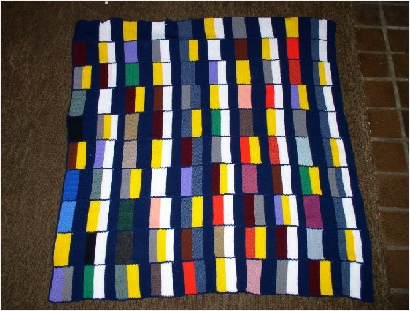

Click to read general information about afghans



Buy a pattern
for this afghan
on the order form
 Buy now
Buy now


COUNTING PANE
A representation of multiplication tables.
The squares across the top row represent the numbers 1 -
The original Counting Pane was bought for the Mathematics Collection of the Science Museum (London)
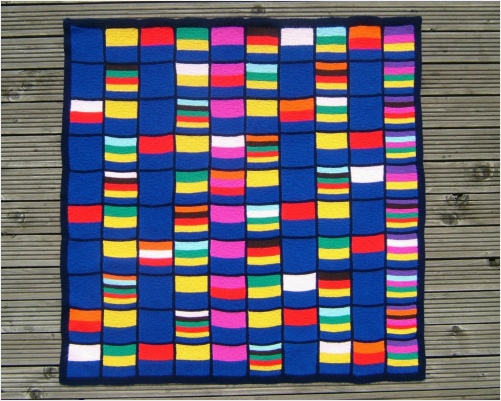
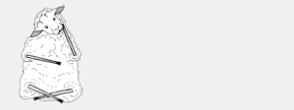
Scroll down for more information about
Counting Pane

KNITTING INFORMATION
Ten colours are needed to represent the numbers 1 to 10. These colours must be distinctly different and easily identifiable by a child, to avoid confusion.

RELATED DESIGNS
NUMBER AFGHANS

CONSTRUCTION INFORMATION
Knitted in ten strips which are stitched together.
It is often difficult to know where inspiration comes from. Counting Pane was a sudden inspiration in our very early days of representing Maths in knitting. Perhaps it was suggested by the squares, to be found in many classrooms, shaded to show multiples of numbers. Counting Pane shows all those shadings simultaneously. It remains one of our favourites and has probably had more attention over the years than any of the others. Does this make it the most important? Maybe.
It was the first time we used the technique of knitting in strips rather than working with diagonal squares and specific angles. The individual squares were separated by a stripe of the background colour and one column was separated from the next by a similar stripe.
Counting Pane has 100 squares in 10 rows. The first row represents the numbers 1 to 10, the second is 11 to 20, and so on. The colours across the top represent factors. Blue stands for 1, yellow stands for 2, red is 3, green is 4, raspberry is 5, brown is 6, pink is 7, pale blue is 8, orange is 9, and purple is 10.
If a square contains yellow it means the number divides by 2, if it has red then the number divides by 3. If a square divides by 2 and 3 it must divide by 6 so also contains brown.
No factors above 10 are included. All squares which remain plain blue are prime numbers (Except Square 1 -
The main problem at the designing stage was working out what size the squares must be to fit the different numbers of stripes needed. We decided to use squares with twenty-
We have made three versions of Counting Pane. The first was bought by the Science Museum. It is slightly different from the others because we tried to resolve the problem of 1 looking like a prime number when technically it isn’t. For versions two and three we decided this was an anomaly we would have to live with and introduce as a discussion point when appropriate. Versions 2 and 3 have other slight cosmetic differences.
At the most basic level this afghan offers a very graphic way for children to understand the difference between odd and even and to realise that this is really the same as knowing whether a number divides by 2. Yellow only appears in half of the columns. These columns contain only even numbers.
Numbers which divide by 5 are also spotted quickly as raspberry is noticeably only in the 5’s and 10’s columns. Putting these two ideas together there is only one column with yellow and raspberry so this must be the column of 10’s.
The average person would consider that they have a reasonable understanding of the numbers 1 -

The original hung in my Mathematics classroom and many pupils became addicted to finding patterns and working out the reasons for them being there. One member of staff -
Counting Pane has formed the basis of many exhibitions and workshops. One memorable occasion was at the annual North-
We asked her a few questions about Counting Pane and she became more and more involved and more and more animated. Her answers were extremely perceptive and she talked at great length and in great depth about the patterns she was seeing. Her responses suggested that she had a very logical train of thought and a thorough understanding of concepts behind what we were asking her. We were shocked when she told us she was ‘useless at Maths -
During the afternoon she returned with a succession of friends and towards the end of the day reappeared yet again with her Maths teacher. She didn’t ask him any questions but proceeded to lecture him with her new found confidence in her own ability. He was astounded.
This served to reinforce some of the views we have long held about teaching Maths. These include -
- not everyone sees things in the same way
- some people have a much more visual approach than others
- Maths does not have to be about writing things down
- pupils may have a very distorted view of their own capabilities
- some pupils need unconventional triggers to begin the thought process
We like to think Counting Pane may have had a lasting effect on that girl -
Click here to read a magazine article about mathematical knitting and crochet, including Curve of Pursuit.
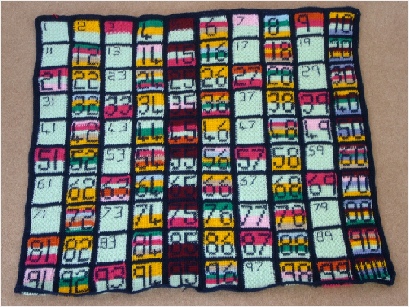
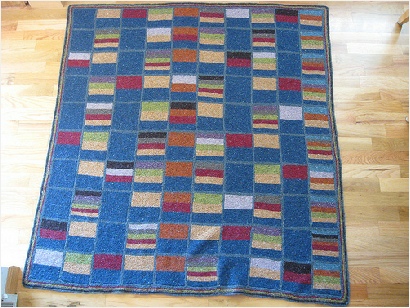
This version was made by Margaret O’Mara
in Tunisian crochet.
This version was made by Pam
Click to see
larger picture
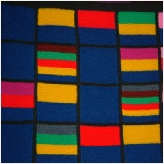
This version was made by Lorraine Ehrlinger.
She named it Prime Squares Afghan.
